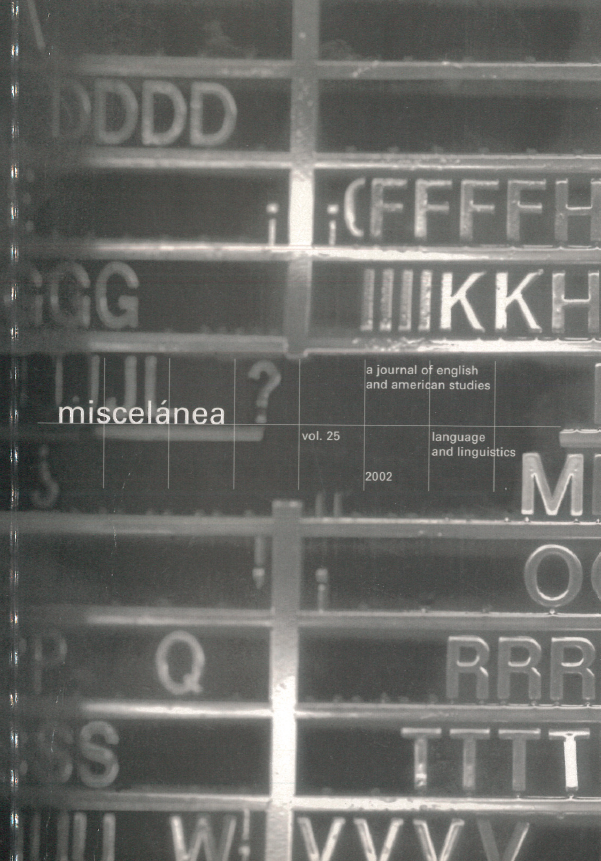The Translation of the Songs in Disney's Beauty and the Beast: An Example of Manipulation
DOI:
https://doi.org/10.26754/ojs_misc/mj.200210527Keywords:
translation norms, shifts, manipulation, source and target communityAbstract
The aim of this paper is to analyse the translation of the songs in Disney's Beauty and the Beast taking into account translation norms as defined by Toury (1995). The paper is divided into two main parts. The first part reviews some works on Translation Studies and manipulation theory, as our theoretical framework or background for the corpus-based part of the paper. The translation shows important regularities in the shifts brought about by cultural differences between the source and the target community, as well as those that reveal some kind of manipulation of the text towards a more naïve presentation. Examples of shift such as substitution material (concrete for abstract vocabularity, for instance) or total deletion of all traces of slang/vulgar language are provided as evidence of a rather standardised and conventional translation. In view of this evidence, it is hypothesized that the translator's intention might have been to make the text more suitable for children, even though the original text was intended for a wider audience.
Downloads
References
ÁLVAREZ, Román and M. Carmen África VIDAL CLARAMONTE. (eds.). 1996. Translation, Power, Subversion. Clevedon, Philadelphia, Adelaide: Multilingual Matters.
—. 1996. “Translating: A Political Act.” In Álvarez, Román and M. Carmen África Vidal Claramonte. (eds.).: 1-9.
BAKER, Mona. 1993. “Corpus Linguistics and Translation Studies. Implications and Applications.” In Baker, Mona, Francis Gill and Elena Tognili-Bonelli. (eds.). Text and Technology. In honour of John Sinclair. Philadelphia/Amsterdam: John Benjamins: 233-252.
BASNETT-MCGUIRE, Susan. 1985. “Ways Through the Labyrinth. Strategies and Methods for Translating Theatre Texts.” In Hermans, Theo. (ed.).: 87-102.
FERNÁNDEZ POLO, Francisco Javier. 1999.Traducción y retórica contrastiva. A propósito de la traducción de textos de divulgación científica del inglés al español. Santiago de Compostela: Universidade de Santiago de Compostela. Servicio de Publicacións e Intercambio Científico.
FRANCO AIXELÁ, Javier. 1996. “Culture-Specific Items in Translation.” In Álvarez, Román and M. Carmen África Vidal Claramonte. (eds.).: 52-78.
HERMANS, Theo. (ed.). 1985. The Manipulation of Literature. Studies in Literary Translation. London/Sydney: Croom Helm.
HOLMES, James S. 1972. “The Name and Nature of Translation Studies.” 3rd International Congress of Applied Linguistics. Copenhagen. HOLMES, James S. 1988. Translated! Amsterdam: Rodopi: 67-80.
LEFEVERE, André. 1992. Translation, Rewriting and the Manipulation of Literary Fame. London and NewYork: Routledge.
Oxford English Dictionary (OED). 1993. 2nd Edition on CD-Rom. Oxford: Oxford U.P.
PUURTINEN, Tiina. 1989. “Two Translations in Comparison: A Study on Readability.” In Tirkkonen-Condit, Sonja and Stephen Condit. (eds.).: 87-112.
TIRKKONEN-CONDIT, Sonja and Stephen CONDIT. 1989. Empirical Studies in Translation and Linguistics. Joensuu: Joensuu yliopiston monituskeskus,
TIRKKONEN-CONDIT, Sonja. 1989. “Theory and Methodology in Translation Research.” In Tirkkonen-Condit, Sonja and Stephen Condit. (eds.).: 3-18.
TOURY, Gideon. 1985. “A Rationale for Descriptive Translation Studies” In Hermans, Theo: (ed.).: 16-41.
TOURY, Gideon. 1995. Descriptive Translation Studies and Beyond. Amsterdam/Philadelphia: John Benjamins P.C.
VANDERAWERA, Ria. 1985. “The Response to Translated Literature: A Sad Example” In Hermans, Theo: (ed.).: 198-214.
Downloads
Published
Issue
Section
License
Copyright (c) 2002 Lucía Loureiro Porto

This work is licensed under a Creative Commons Attribution-NonCommercial 4.0 International License.


